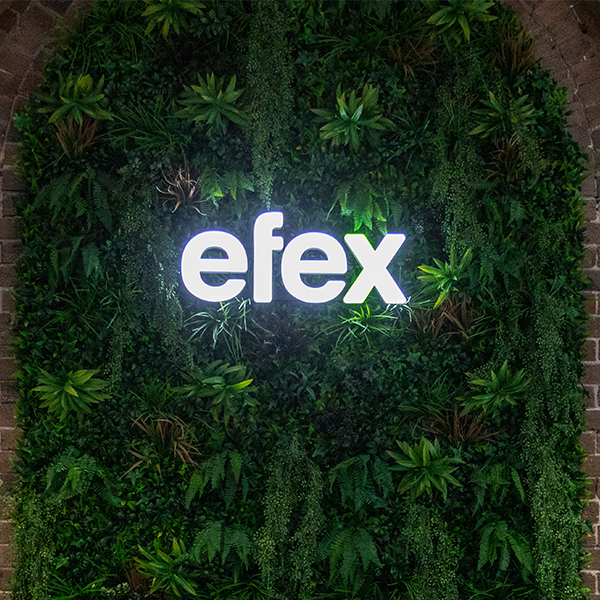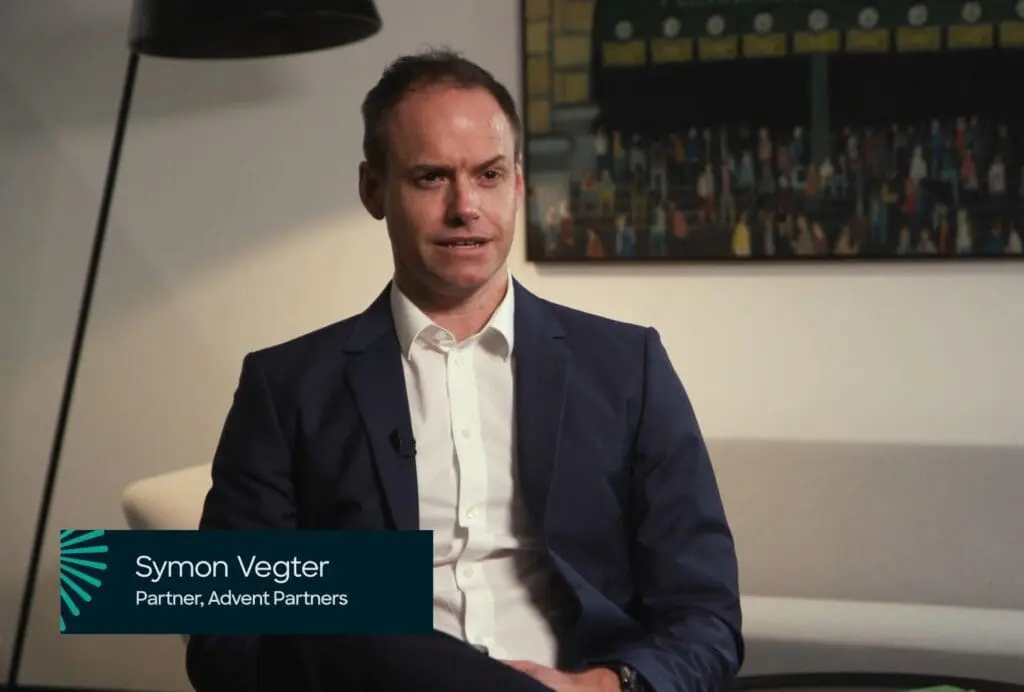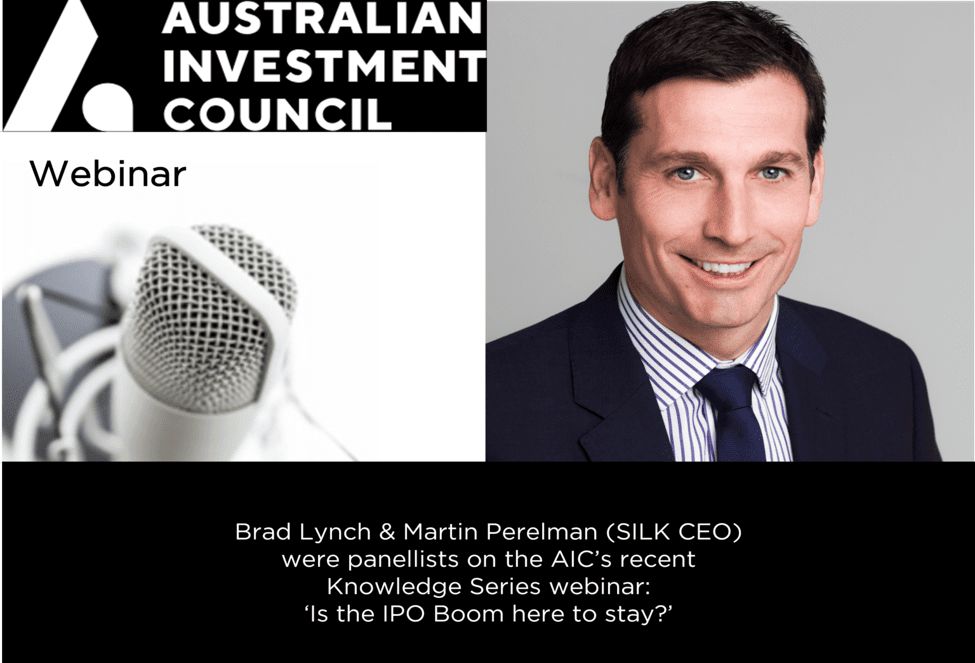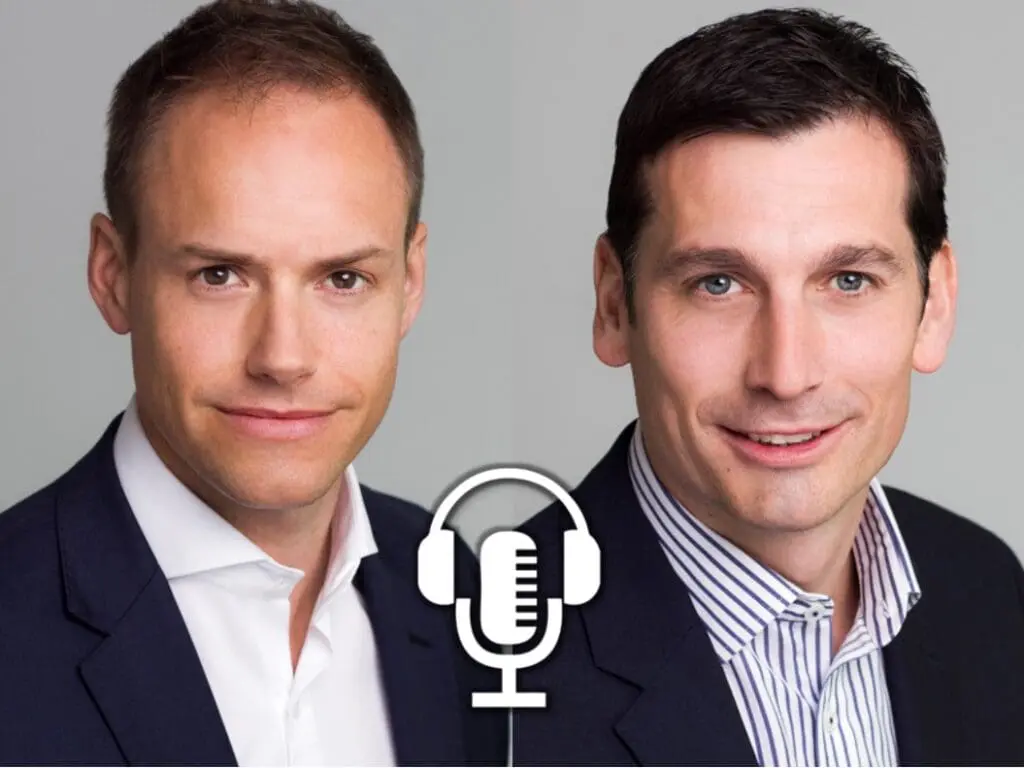11 June 2021
Brad Lynch was recently a guest on a podcast hosted by John Keeves, of the BLS Report, exploring the Environmental, Social and Governance factors (ESG’s), how they affect investment decisions and how ESG factors are becoming increasingly important in M&A investment deals in Australia and overseas.
Listen to the podcast here
_________________________________________________________________________________________
Transcript
Hosted by: John Keeves
Guest: Brad Lynch of Advent Partners
John Keeves:
Hello, and welcome to the sixth edition of the BLS Report. The BLS Report is a series of podcasts on issues of interest to the members of the Business Law Section of the Law Council of Australia, and we hope the wider legal community. The series honours the legacy of our friend and mentor the late Professor Bob Baxt AO, one of the founders and key drivers of the BLS. I’m John Keeves, a Partner with Johnson Winter & Slattery, and a member of the Executive of the Business Law Section. With me today is Professor Pamela Hanrahan from University of New South Wales Business School. Pamela, is also a member of the Executive of the BLS and the corporations and financial services lawyer, and an active member of the BLS corporations committee. Welcome, Pamela.
Pamela Hanrahan:
Thanks, John.
John Keeves:
Today’s discussion is about ESG, Environmental, Social and Governance factors and how they affect investment decisions. And how ESG factors are becoming increasingly important in M&A and Investment deals in Australia and overseas.
John Keeves:
Today, we have one of Australia’s leading corporate M&A lawyers, Rebecca Maslen-Stannage, a Partner with Herbert Smith Freehills and Global Chair and Senior Partner of HSF. And also a member of our corporations committee and a member of the BLS Executive in her spare time. Thanks for joining us, Rebecca.
Rebecca Maslen-Stannage:
Pleasure, John.
John Keeves:
We also have, Brad Lynch, a Partner with Advent Partners, one of Australia’s longest standing investment managers with seven funds and over 500 million under management. Welcome Brad, we’re very pleased you could be here today.
Brad Lynch:
Great to be with you, John.
John Keeves:
ESG, Environmental, Social and Governance, have we passed a bit of a tipping point in the last few years, possibly influenced by the impact of COVID, but possibly quite independent and just a realisation that sustainability and that zero by 2050, aren’t just nice to haves. But what does this mean for M&A Investments?
Some of our listeners would be familiar with the UN supported principles of responsible investment that have been adopted by over 4,000 signatories around the world. But the numbers of organisations signing up went from around 100 per year in 2015 to over 900 in 2020, quite a significant rise. Earlier this year in March, Allison Herren Lee, the acting Chair of the US Securities Regulator, the SEC, gave a major speech to the Centre for American progress on the SEC’s focused on climate change. And a couple of weeks ago, the AFR could carry a headline, ESG is a game changer for investors. So clearly ESG is part of the zeitgeists. Rebecca, let’s start by setting the scene. When we talk about ESG, exactly what do we mean in the context of M&A and Investment deals?
Rebecca Maslen-Stannage:
John, you’ve already said “E” for Environment, “S” for Social, and “G” for Governance and these are the things that are having, I guess, two quite different impacts on M&A activity.
The first is in the past, if there’d been maybe an employee underpayment issue on a target that someone’s looking at, or if it’s got a practice that isn’t seen as ideal from a climate change perspective, that might not have been a friend of mine and consideration for a bit or just something they think they can mitigate, but now that’s going to be seen as a much more serious issue.
And the second is; ESG factors are actually driving M&A activity and that’s because we’re seeing investors shying away from some assets that they might see as having an unacceptable ESG profile. And so companies are looking at their portfolio and if they’ve got one or two assets in there that are seen as having a more adverse ESG profile than the others, then their company’s likely to want to actually sell those assets so that they’ve got greater uniformity of ESG profile. And they’re not going to find that some investors won’t invest in the company at all because they find some of the assets just don’t meet what their criteria are in terms of ESG.
John Keeves:
Thanks, Rebecca. Brad, how does it line up with your experience in the PE world?
Brad Lynch:
John, from our perspective ESG has always formed the basis of any screening for a potential opportunity. We explicitly call it ESG now but non-financial metrics and looking at the business more broader has always been a part of a diligence process. For example, any investor would look at a business’s interactions with its customers and employees in understanding an opportunity. Profiling that particular business’s reputation, to assess its ability to attract talent, for example. Historically, ESG has been used more as a negative kind of lens, a screening process to actually cut out particular sectors. Increasingly in an investing context, it’s more about moving ESG to an opportunity. So is there an opportunity to improve the ESG credentials of a particular target that can have material positive valuation impact? From a thematic perspective, looking at businesses that have the ability to be able to create competitive advantage and grow because of these structural shifts around ESG. So, ESG has always been part of the investment process. It’s being called out explicitly now, but it’s actually moving from a negative kind of screening process to a positive screening process.
Pamela Hanrahan:
Thanks, Brad. You mentioned then that it’s always been a consideration for investors but I’m curious as to whether, Rebecca, are you seeing greater pressure for positive ESG decisions coming from the institutional investor market? Do you think the institutions are driving this?
Rebecca Maslen-Stannage:
Absolutely. That’s one of the key factors. And of course they’re influenced by their own customer base. I tell my 18 year old daughter it’s all really attributable to her because when she was looking for a super fund, she asked for my help and I’m like, “Oh, okay, what are you looking for?” And I thought of myself at the same age, looking for where am I going to get the best investment return. That was not top of her list. That was not actually on her list. She had one item on her list and it was, “I want a sustainable, socially responsible, super fund.” And I guess if you think of that across the board, super funds looking to the next generation of people and that really is the profile of the younger generations. It’s really important to them that they can meet the expectations of a more socially conscious world.
And of course, it’s not just the 18 year old’s because particularly we noticed a change in Australia after the bushfires, where people’s perception of climate change and related social issues just shifted. And so there’s a far greater expectation really across the whole community now that people will invest responsibly. And so it’s had a dramatic change after we thought this was coming for ages, but it’s really been a far more dramatic shift in recent time.
Pamela Hanrahan:
That’s interesting. Now, Brad, Advent is often an early stage investor. That’s right, isn’t it? And so it’s that pressure from the sort of institutional market in listed companies pushing through into private companies that are looking to grow or maybe go public eventually.
Brad Lynch:
Yes, that is certainly so, all the interactions that we have, and we have an institutional investor base, not only represented here in Australia, but offshore as well. Being able to demonstrate ESG credentials across the board with those interactions with the investors is something which is front of mind across the spectrum, regardless of where those investors are located. Just picking up on Rebecca’s point about the change with respect to ESG, we’re seeing this societal change and a structural shift where ESG is becoming more than just a set of criteria or policy but a real set of beliefs and corporate beliefs and that’s a really important consideration. You’re seeing this cascade down from members, to investors, requiring asset managers and fund managers to be socially responsible where they’re investing.
You are seeing this in government policy as well in democratic societies, as the will of the people, which is policy around sustainable infrastructure; be it energy policy, be it transport, electric vehicles, be it affordable housing. And then in the Boardroom, we’re seeing CEOs and senior leaders actually drive change and call out particular kinds of beliefs and the behaviours they expect within their organisations. Of recent times, which we’re a better society for it, it is diversity and inclusion as well. So we’re seeing ESG as maybe historically, as I said previously, a negative set or screening kind of criteria, to a set of behaviours parameters, which are corporate beliefs. And that’s the evolution that we’re seeing at the moment around ESG.
John Keeves:
This is obviously a global thing but as Australia, it would be regarding the mainstream or an outlier?
Rebecca Maslen-Stannage:
John, I’d say we’re definitely in the mainstream because we had bushfires as one of our catalysts but there being equivalent, whether it be extreme weather events around the world, or just with this increased social consciousness and perhaps the fact that social media has become a platform for distributing that sort of thinking more broadly. We’re noticing it everywhere and deal activity driven by it. The fact that that is up, that is a global phenomenon as well.
John Keeves:
Okay and Brad, companies or investees that focus on ESG more valuable or less risky? I mean, is that a factor and is there data that supports that?
Brad Lynch:
So there was a report last year that came out of Canada. A EY report, which looked at the inflows into ESG or aligned kind of funds versus those that are unaligned. And those aligned ESG funds were able to capture four times the inflows relative to those that weren’t. So the money is following to ESG responsible investors and asset managers. What does that mean? It means that asset managers that have this product will attract additional capital and those businesses that are demonstrating ESG credentials will also be attracting that capital and making them more valuable. So you can see through just looking at this study, looking at where the money is going, yes, if you can demonstrate sustainability, if you can demonstrate certain aspects of leadership around ESG that does help with respect to value and how businesses, investors perceive your particular business.
John Keeves:
There’s been a bit of media and other comment about the role of proxy advisors and their legislative proposals. Do proxy advisors have a have a role in this sort of ESG space?
Rebecca Maslen-Stannage:
I think they’re particularly interested in the “G” aspect of it. I’d say that as part of a broad base of different groups that really are reflecting in this respect, broader society, at the moment in terms of influencing investor behaviour. So yes, they’re interested but we’re no longer just in the territory of maybe proxy advisors and shareholder activists who are interested in this. It’s a far broader phenomenon now. And so, as Brad said, if you’re on the Board of a listed company you’re certainly thinking about what the proxy advisors will think about you. But you’re also thinking what will my customers think? What will broader society think? As well as what will my shareholders think?
Pamela Hanrahan:
This is the BLS Report. I’m Pamela Hanrahan, and we’re listening to Rebecca Maslen-Stannage from HSF and Brad Lynch from Advent on ESG. Brad, Rebecca, can you give us some real life examples of where ESG factors have affected a live deal recently? Rebecca, first.
Rebecca Maslen-Stannage:
Sure. So I guess first Pamela, they’re driving a lot of the deals you see in the market. So any number of mining companies, for example, around the world, you’ll see trying to sell or de-merge their coal assets. That’s those companies trying to separate different assets with different ESG profiles that will appeal to different types of investor, rather than having the mining conglomerate type style company have its share price affected by lack of demand from those investors who don’t want exposure to coal. And we’ve seen a number of deals that don’t come to light at the moment because there are complex ESG factors that aren’t acceptable from a business perspective. And Brad, pointed out from an investor perspective, if you can deal with those, say put a new face on a company that might have seen, had a tainted reputation in the past three ESG factors that can add value, we’re still seeing some deals, however, that don’t see the light of day, because there are issues that are just seen as reputational downside. And we have certainly seen bidders walk away from assets on the basis of ESG concerns.
Pamela Hanrahan:
On that sort of social side, are there particular sectors that you think are going to end up being pure play? I’m thinking maybe gambling or alcohol?
Rebecca Maslen-Stannage:
So, I suppose already you see some push for that in companies that perhaps got alcohol and non-alcoholic beverages and investor activity, not just staying away from those companies, but potentially trying to influence them in what they do, which will drive deals, where they separate out, perhaps the alcohol from the non-alcoholic beverages. We definitely see a push for those sorts of deals.
Pamela Hanrahan:
Yeah. Thank you. Brad, what are you seeing?
Brad Lynch:
Pamela, as you mentioned before, typically we’re working with businesses that are midsize corporates, often as the first institutional investor. Some of these businesses are early in their ESG kind of journey relative to larger organisations. For us, some of the things that we’ve committed to as a group and certainly committed to our investors is to really drive some ESG improvement with the businesses we’re partnering with. So the areas that we’re focused on, and I think it’s really important to be targeted, is where we think we can have the greatest impact with some of these businesses? So we’re focusing on three key areas within our investee.
So diversity and inclusion is one particular area were focused on 40:40:20 gender ratios and really promoting this at the senior leadership levels within our investees. Other is sustainable supply chains. So in particular understanding the kind of supply chains in more detail and obviously compliance with modern slavery as well, that’s a key focus. And more broadly just being more conscious of our carbon footprint within our investees. As a firm at Advent, we’ve been carbon neutral for two years now which we’re committed to continuing this. And even for us the journey to get to that point, it’s started with understanding our footprint to begin with and going through that educational process to be able to capture the data and then make some real decisions about how we get to that neutral position which we’ve been able to do. As I said, for the last two years.
With all this, one of the questions we often get asked by our investors is, “Okay, how are you actually putting some teeth around this? How’s it cutting through?” And with all our CEOs across our investee group, within their incentives and in particular short term incentives, there will be a number of ESG related metrics. And so this is linking the remuneration and the incentives of our senior leaders, in particular our CEOs, with tangible improvement and tangible progress measured against some ESG kind of metric. And that’s how we’re bringing to life ESG and being a socially responsible investor.
Pamela Hanrahan:
I’m just going to go back, Brad, to a couple of things you mentioned there. So on the governance side, diversity and inclusion 40:40:20. That’s aiming for 40% men, 40% women, and then the other 20% can go either way. Is that right?
Brad Lynch:
Correct. That’s correct.
Pamela Hanrahan:
Yeah, good. And you also mentioned supply chain. This is something that I think all companies who are subject to the modern slavery reporting have really focused on. I know I’m on a Board where we’ve spent quite a bit of time thinking about our supply chain. This does might be interested to know that there was a case recently in the UK where a company was held to a duty of care to people who were working in the ship breaking industry in Bangladesh. They had on solar ship through various ship brokers to go off to Bangladesh to be broken up. And at work, there was injury because of the working conditions there are very unsafe. And the UK company that was at the beginning of that process, or the original owner of the ship was held to our duty of care to the workers in Bangladesh, despite them being separated by many different corporate entities in that supply chain. So I think that’s something that people are really focusing on at the moment.
John Keeves:
And Pamela, can I ask a question of you? I think this is an allied topic about the duty of investment and particularly super trustees to take into account presumably or climate factors in particular, but ESG factors. You’re an expert witness in a case recently. Could you tell us a little bit about that?
Pamela Hanrahan:
Yes, John, I was. I was expert witness in a case called McVeigh against REST where a member of a superannuation fund that brought proceedings against its superannuation trustee, arguing that they ought to have paid more attention to the climate change risk in their portfolio and instructed their asset managers slightly differently from they had. That case was settled in November of last year with REST releasing a statement, acknowledging the various climate risks that were in its portfolio and its responsibility to take active steps to manage that risk. So it was an interesting case.
Funnily enough, when we talk about climate risk, which I know is just a subset of what we’re talking about today, we’re looking at physical risks, we’re looking at transition risks, but we are also increasingly looking at litigation risk. And Australia is a bit of a hotspot for climate litigation. We recently had the case that the school children brought against the Environment Minister for approving the coal mine development up in Queensland, where the Federal Court found that the Minister did owe the young people a duty to exercise her approval powers in a way that didn’t imperil their futures. So it’s mitigation risk is a live issue around the climate side in particular. And also as I’ve said around the supply chain, so I think that UK case demonstrates.
John Keeves:
I guess, I’ll take that one step further. So the litigation risk around climate change around disclosure as well for listed companies. Rebecca, do you want to make a comment about that?
Rebecca Maslen-Stannage:
Yes. This is definitely an emerging theme, John. And one thing we’re always conscious of with clients is not to have them over promise in the ESG reporting because it’s really easy to slip into this space of trying to make it all sound as good as possible. And in the US we’re already seeing litigation where investors or activists are actually litigating over those claims where they can’t perhaps be sustained. There might not have been a reasonable basis for what was said. So you do need to strike this caution of putting your best foot forward, but not over stating how socially responsible you are as a company, but really giving a balanced picture. Because as Pamela said, given how litigious Australia is, we fully expect that there will be an increase in that type of litigation here as well.
John Keeves:
I guess another form of activism, if I can call it that, well shareholder activism and certainly from environmental and if I can say activist groups, putting things on the agenda for many listed companies. That seems to be a fairly standard thing now. Every listed company that might have some ESG issues should expect to that to pop up at their AGM?
Rebecca Maslen-Stannage:
That’s right, John. And when you think about it, how that tends to be dealt with now is quite different from how it would have been in the past. We’re seeing a more open and empathetic approach to listening to the concerns raised by people who are putting forward those proposals. And that’s really reflecting again, the point that Brad made about Boards looking differently at these days, knowing that the concerns around being a good ESG citizen, I felt quite broadly across the community and the investor base and the customer base, not just with what might’ve been the past, being perceived as an activist fringe.
John Keeves:
Brad, do you want to comment on that?
Brad Lynch:
Well, my experience at a Board level both private companies and listed companies is that the boardroom conversations are very much around how ESG can help competitive advantage and create opportunity. That’s a real shift in terms of the mindset. If we continue to look at this as an opportunity, and those organisations that are embracing this kind of dialogue where they’re at on their ESG journey and being real about that and recognising that there will be a process to get to best practice, but making those steps and going on that journey is a worthy pursuit.
John Keeves:
Look at today is the 11th of June. And last Saturday’s weekend, ASIC Commission, Cathie Armour was reported warning against green-washing, companies making exaggerated claims about carbon neutrality or net zero without a reasonable basis. Is some of the focus of ESG, particularly in the public company space, this kind of thing? Just trying to present a positive spin on events rather than substance? And how can we tell the difference between the cycle green-washing and reality?
Rebecca Maslen-Stannage:
Good question, John. I mean, I feel it’s genuinely and broadly felt by most of the corporates that we deal with. They have realised, we’ve all realized, following bushfires and other events, that we need to be focused on these issues. And so it doesn’t feel to me there’s extensive green-washing in the market. There will no doubt be the odd company who perhaps gives a picture, trying to tick the box without walking the talk. And like I said, there’ll possibly be litigation consequences in relation to that. But I’m glad to say, I think most of what we’re seeing is very genuine.
Brad Lynch:
And I think on that, John, the market is becoming more educated around ESG, so they can actually call out where there is green-washing or whether it’s kind of tick the box kind of compliance exercise. There are internationally accepted standards. SASB, which is the Sustainability Accounting Standards Board, which are actually providing real metrics around this. And we derive some of our metrics for our investee companies from those standards as well. So I think there is a set of criteria, which is being used to benchmark substance over form and increasingly diligent directors and those at senior leadership levels are educating themselves in this area to ensure that they’re actually providing substance to their ESG initiatives.
Pamela Hanrahan:
That’s a really important point. So 10 years ago, we had a range of different metrics and reporting frameworks around it, particularly environmental matters, but social and governance measures as well. And I think we’re starting to see those mature and coalesce. Now, we have the TCFD, we have reporting against sustainable development goals, we have modern slavery reporting. So it’s part of the sort of natural development of this side of the market that those reporting frameworks are starting to mature. And I think that’s really an important step in moving things forward.
I know as lawyers, we always think that it’s the law that enables commerce and accountants always think that it’s accounting that enables commerce. But I think reporting is a really important part of this. If you can measure something and you can measure change in that thing, then it’s much easier to link it as, Brad said, to people’s remuneration or to the performance factors that influence the company. And I think that’s been a really significant development over recent times. We’re not all the way there yet. I think there’s still a bit of shaking out about the reporting frameworks, but it’s definitely the pace of change is increasing.
John Keeves:
And they used to say, what measures matters or what is measured is managed? Can I, just a slight change of direction, debt finance. Are debt financers taking into account ESG factors and making decisions about making credit available and is that having an impact?
Brad Lynch:
I think absolutely they are. There is the emergence of sustainable lending as well, where we’re seeing corporates be rewarded for progress against ESG standards whereby the rate of charges or interest actually steps down when you’re demonstrating progress against a certain number of ESG criteria. So there are actual financial products out there that are linking interest and charges to ESG outcomes, which I think is fantastic. So absolutely there is further screening, from financiers regarding the kind of the counterparties that they lend to. But more importantly, there’s a development of financial products out there, which from a lending perspective, incorporating direct ESG outcomes with respect to that relationship between a lender and borrower.
John Keeves:
Okay. Brad, any final comment or any takeaway points for our listeners?
Brad Lynch:
I view ESG is being something that’s always considered, which is the manner in which you achieve an outcome is actually more important than the outcome itself. So the pursuit of profits, for example, or how you go about making money, is more important than the actual outcome itself. So our philosophy is good ESG is good business, it’s great for society, it’s great for the planet. And I think the shifts that we’re seeing across the board in the investment community is a real positive one around ESG.
John Keeves:
And Rebecca, as a global chair and senior partner, you get the final word.
Rebecca Maslen-Stannage:
I would just say, as a deal lawyer for many years, we found this shift at the end of the day, really quite positive and enjoyable. Maybe from thinking more just about dollars and cents to also factoring a very genuine way, broader issues about looking after the planet and sustainability. That actually has changed the way that a lot of our clients look at things, but in a way that it spreads are very positive for us and for the planet. So I think it’s only net net a positive for the whole deal environment that there has been a shift.
John Keeves:
We’ve been fortunate to have with us Brad Lynch from Advent Partners and Rebecca Maslen-Stannage from Herbert Smith Freehills. Brad and Rebecca, thank you again for your time.
Brad Lynch:
Thanks, John.
John Keeves:
And thanks to my co-presenter, Pamela Hanrahan from University of New South Wales.
Pamela Hanrahan:
Thanks, John.
John Keeves:
I’m John Keeves, and this has been the BLS Report in honour of the late professor Bob Baxt AO. Produced by the Business Law Section of the Law Council of Australia in collaboration with 2SEO.
This transcript has been edited for clarity.





















